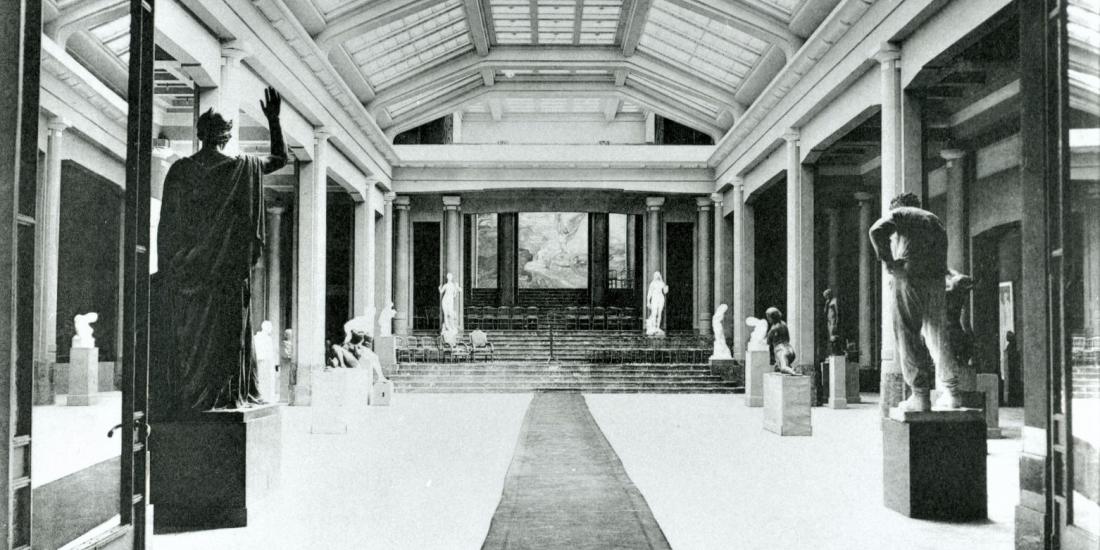His ambitious project was designed to meet several challenges. A town planning one, first of all: linking the upper to the lower town. An architectural one: creating a building that would meet the needs of different disciplines while still preserving its own architectural cogency. An artistic challenge: to host all forms of art, at the highest level and in the best possible conditions. A cultural challenge, finally: to make art accessible to as many people as possible, free of elitism but without lowering standards.
Horta traded the sinuous lines of Art Nouveau for the geometric design language of Art Deco, but the incidence of light in the exhibition rooms and the ingenious arrangement of the different spaces betray the hand of the master. In his memoirs, Horta referred to the Centre as a high point in his career.
“As soon as you enter, all is astonishment and awe. Astonishment, because once past the angled stairs from Rue Royale, the exhibition galleries unfold before the unsuspecting visitor; they expand and create perspectives that radiate with light and tickle the imagination, like avenues leading away from a sacred wood where muses gather. And awe, because the architectural proportions and decorative ornamentation of this temple – in which the arts beyond painting and sculpture will soon have their own stage – contribute to the desired goal with admirable confidence, taste and grandeur.”
Horta was forced to cope with quite a few obstacles before he could realise his plans, which were seen by many as crazy. Edward Anseele, the minister of public works, was immediately interested in his plans. In 1920, however, parliament refused to approve funding, until in 1922 the Société du Palais des Beaux-Arts came into being and the project finally got off the ground
The City of Brussels made available an irregular plot measuring 8000m2. In exchange, they insisted that 16 shops had to be placed along the street front in order to liven up this street then described as "gloomy, deserted, as if cut off from Brussels life [1]." This elicited the following outburst from Horta in his memoirs: "Palace? That is not how I think of it: just an arts centre, because I would never be able to give that name to a construction whose main facade is taken up by shops."
On the rue Royale/Koningsstraat, higher up the hill, the Centre was not permitted to spoil the king’s view of the lower town. The height of the building was therefore strictly limited and the majority of the "Palace" was built underground.
[1] Journal de Liège, 1st July 1920.
